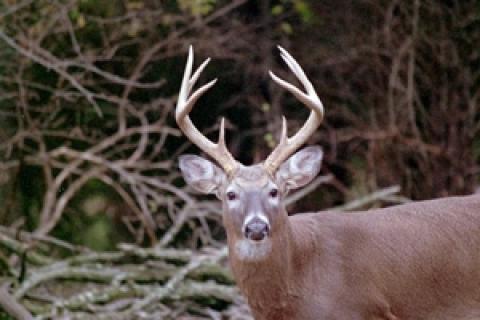
 If you've ever thought of having some timber cut on your hunting property, you probably worried whether it would drive out the deer.
If you've ever thought of having some timber cut on your hunting property, you probably worried whether it would drive out the deer.
I know that's the fear I had when I had some of my woods selectively cut. I was afraid the chainsaws and activity would chase the deer away. I knew the woods needed cutting, though, so I went ahead.
I needn't have worried. In fact, the chain saw work seemed to draw more deer onto my property. The reason was clear: Timber cutting offered new sources of both food and cover to the whitetails.
By introducing a nutritious new food source in the form of the tree tops that are left, freshly timbered areas can be magnets for deer. They nibble on both buds and tender tips of the branches. And the tree tops the loggers leave also offer thermal and security cover.
If you don't have property of your own that needs cutting, you can find fresh timber cuts by driving forest roads or glassing from high spots. Also check with state and federal forestry offices and timber companies in your area.
Even cuts a year or two old are good. The browse on these tops is gone, but they'll have fresh shoots coming up from the stumps and still offer good cover. The best cuts, however, are the very freshest ones-preferably just a few days or couple of weeks old.
The advantage of finding fresh timber cuts is enormous. Instead of having hundreds of acres of habitat to search for your quarry, you have a small, concentrated spot to focus on.
Now let's look at how to set up the perfect ambush for a freshly-cut hotspot.
First, through maps and on-site scouting, delineate the exact layout of the cut.
Second, try to determine whether the food and cover is so good the deer are simply camping out there, or whether they're bedding in their traditional spots and feeding there in mornings and evenings.
If you jump deer in the cut during midday, they're likely staying put there. Back off and plan to still hunt. Head into the wind and work the cover meticulously, circling around the tops so you don't create a racket. Look for feeding deer and also bedded animals hunkered beside the shelter of the tops or a piece of antler jutting out above them.
If deer are moving from their traditional bedding areas to the tops to feed late in the day, stand hunting is best. Find the areas in the cut with the freshest sign, then plot where bedding cover is and set up an ambush between those two spots.
Pick an area with good visibility, perhaps a terrain or vegetation funnel they'll pass through as they head for the fresh food source. If the wind is right, you can simply set up right on the edge of the cut in the direction bucks would likely approach from.
Stay flexible, though. If the deer browse one part of the cut heavily, they may switch to another section the following day. Or another piece of timber might be cut, drawing them over the next ridge. Monitor where the freshest droppings, tracks and chewed branch tips are to make sure you're in the hottest spot.
Often the deer will work gradually in one direction. Uncover that movement pattern and set up ahead of them for the next day's hunt.
- 6693 views

